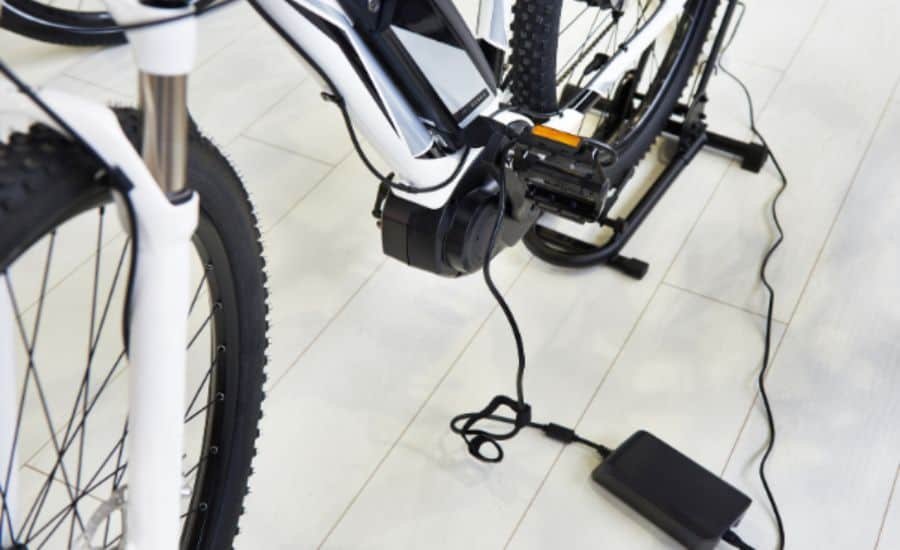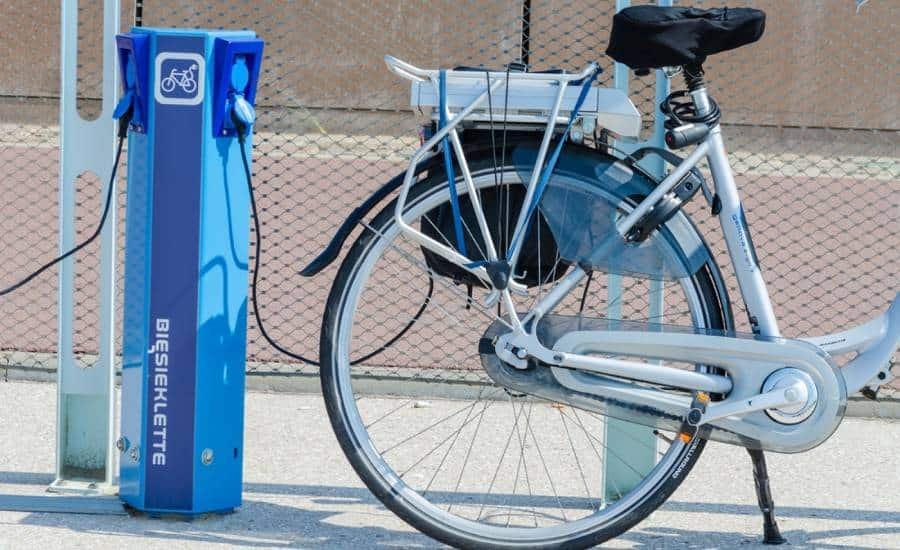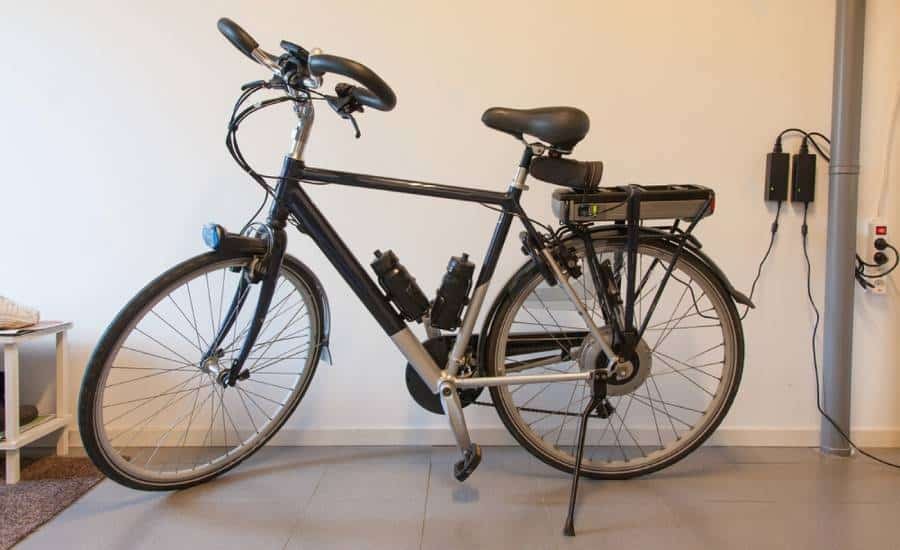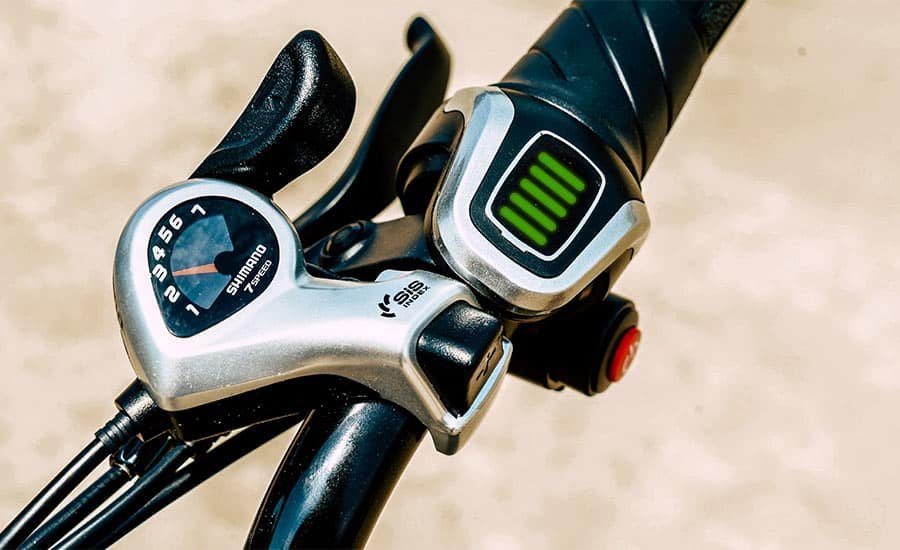Are you considering buying an e-bike but worried about the charging time? Or maybe you’re just curious about how long it takes to juice up an electric bicycle? If so, you’re not alone. One of the most common pain points for e-bike riders is the amount of time it takes to fully charge their bike’s battery.
People love to ride, but not all e-bike batteries can go the extra mile with you, especially when they are not fully charged. While charging times can vary depending on the type of battery and other factors, it’s important to understand how long you can expect to wait before hitting the road again.
In this post, we will discuss the different factors that affect e-bike charging time and provide tips to help you charge your e-bike efficiently.
Understanding E-bike Batteries: Types and Capacity

Understanding e-bike batteries is crucial to ensure a long-lasting and enjoyable ride. First off, let’s talk about the different types of e-bike batteries below.
🔲 Lithium Polymer (LiPo) Batteries: These batteries are similar to Li-Ion batteries, but they have a different chemical composition. They are lighter and thinner than Li-Ion batteries, making them popular for use in folding e-bikes.
🔲 Nickel Metal Hydride (NiMH) Batteries: These batteries were commonly used in e-bikes before the introduction of Li-Ion batteries. They have a lower energy density and are heavier than Li-Ion batteries.
🔲 Lead-Acid Batteries: These are the oldest and heaviest type of e-bike batteries. They are inexpensive and widely available but have a low energy density and a short battery life.
🔲 Solid State Batteries: These are a new type of battery that uses solid electrolytes instead of liquid electrolytes. They are currently in the research and development stage and are not yet widely available for e-bikes.
However, the most common type of e-bike battery is lithium-ion (Li-ion). Li-ion batteries are the most popular due to their lightweight and high energy density, making them ideal for e-bikes. Li-ion batteries also have a low self-discharge rate, which means they can hold their charge for longer periods of time. Overall, Li-ion batteries are a popular choice for e-bikes due to their durability, reliability, and efficiency.
Now, let’s move on to capacity. E-bike batteries are usually measured in watt-hours (Wh), which is the amount of energy the battery can hold. The higher the watt-hours, the longer the battery will last. However, it’s important to note that battery capacity can vary depending on several factors such as the rider’s weight, terrain, and assist level.
It’s also worth mentioning that some e-bikes come with removable batteries, which can be handy if you need to charge the battery separately from the bike or if you want to carry a spare battery for longer rides.
So, when choosing an e-bike battery, consider your riding needs and preferences. If you’re looking for a lightweight and efficient battery, go for a Li-ion battery with high watt-hours. Don’t forget to check if the battery is removable, as this can be a convenient feature for some riders.
How Long Does It Take to Charge an Electric Bike?

The charging time of an electric bike can vary depending on several factors such as the battery capacity, the type of charger, and the charging level. Typically, it can take anywhere from 2 to 8 hours to fully charge an electric bike battery.
Most e-bike batteries come with a standard charger that can take around 4 to 6 hours to charge a depleted battery to full capacity. However, some e-bikes have fast chargers that can reduce the charging time to as little as 2 hours.
It’s important to note that charging time can also vary based on the battery capacity. A larger battery with more watt-hours will take longer to charge than a smaller battery with fewer watt-hours. Additionally, charging time can be affected by the charging level, with a lower charging level taking longer than a higher charging level.
It’s recommended to follow the manufacturer’s instructions on charging your e-bike battery to ensure optimal battery health and performance. Additionally, it’s a good idea to avoid leaving your battery charging for too long, as overcharging can damage the battery and shorten its lifespan.
In summary, the charging time of an electric bike can range from 2 to 8 hours, depending on factors such as battery capacity, charger type, and charging level. It’s essential to follow the manufacturer’s instructions and avoid overcharging to ensure the longevity and performance of your e-bike battery.
Factors Affecting E-bike Charging Time

There are several factors that can affect the charging time of an e-bike battery. Some of these factors include:
🔲 Battery capacity: The larger the battery capacity, the longer it will take to charge. This is because there is more energy to be stored, which requires more time to charge.
🔲 Charger type: Different chargers have different charging rates. A standard charger may take longer to charge the battery compared to a fast charger.
🔲 Charging level: E-bike batteries can be sufficiently charged at different levels, such as 80% or 100%. Charging a battery until it’s 100% will certainly take longer than charging it to 60% or 80%.
🔲 Temperature: Charging time can also be affected by the temperature of the battery and the environment. Extreme temperatures can lengthen the charging time of your electric bike battery.
🔲 Battery age: The age of the battery can also affect the charging time. Older batteries may take longer to charge and may not hold a charge as well as newer batteries.
It’s important to keep in mind that these factors are interconnected, and the actual charging time will depend on the specific combination of these factors. It’s recommended to follow the manufacturer’s instructions for charging your e-bike battery to ensure optimal performance and longevity.
Tips to Reduce E-bike Charging Time

If there’s actually a way to save time and money while charging your e-bike efficiently, wouldn’t you use it? Well, here are some helpful tips that may just help you achieve that.
🔲 Use a fast charger: A fast charger can significantly reduce charging time compared to a standard charger. However, it’s important to make sure that the fast charger is compatible with your e-bike battery to avoid damaging the battery.
🔲 Charge efficiently: Charging the battery to an average or sufficient level like 60-80%, can reduce the charging time. However, keep in mind that this may also reduce the range of the e-bike.
🔲 Keep the battery cool: High temperatures can reduce charging capacity, so it’s a good idea to charge the battery in a cooler environment. However, avoid charging the battery in extremely cold temperatures, as this can damage the battery.
🔲 Avoid frequent charging: Charging the battery frequently, even if it’s not fully discharged, can reduce the overall lifespan of the battery. Try to charge the battery only when it’s necessary.
🔲 Use the right charger: Make sure to use the charger that is recommended by the manufacturer of your e-bike. Using an incompatible charger can damage the battery and increase charging time.
🔲 Optimize battery usage: Efficient usage of the battery can help reduce charging time. Avoid using high power modes or accelerating too quickly, and try to maintain a steady speed to conserve battery power.
By following these tips, you can reduce the charging time of your e-bike battery and maximize its performance and longevity.
Can You Overcharge an E-bike Battery?

Overcharging an e-bike battery means charging the battery beyond its recommended capacity, which can cause damage to the battery and shorten its lifespan. Think of it like overfilling a water bottle – if you keep pouring water beyond the top, it will spill out and make a mess.
The good news is that most modern e-bike batteries are designed with safety features to prevent overcharging. Once the battery is fully charged, the charging process will automatically stop. However, it’s still important to follow the manufacturer’s recommended charging time and to use a charger that is specifically designed for your e-bike battery.
In general, it’s a good practice to unplug the charger from the battery once the battery is fully charged. This will prevent any accidents that may occur as a result of leaving the battery plugged in for too long. By taking care not to overcharge your e-bike battery, you can help ensure its longevity and maximize its performance for years to come!
Can I Leave My E-bike Charging Overnight?

Many e-bike owners wonder whether it is safe to leave their bike battery charging overnight. The short answer is that it depends on several factors.
First, it is important to note that modern e-bike batteries are designed with safety features to prevent overcharging. This means that once the battery reaches a full charge, it will stop charging automatically, which helps to prevent any damage that could be caused by overcharging.
However, even with these safety features in place, it is still generally recommended to avoid leaving your e-bike battery charging overnight on a regular basis. This is because continuous charging can cause the battery to heat up, which can degrade the battery’s overall health over time. In extreme cases, this can even lead to safety issues such as battery swelling or catching fire.
So, while it is generally safe to leave your e-bike battery charging overnight occasionally, it is still best to unplug it as soon as it reaches a full charge.
Additionally, if you plan to leave your e-bike battery charging for an extended period of time, such as several days or weeks, it is recommended to periodically check on it to ensure that it is not overheating or experiencing any other issues.
How to Determine the Right Charging Time for Your E-bike?

Determining the right charging time for your e-bike is important to keep your battery healthy and ensure that you have enough charge for your next ride. Here are some steps to follow:
🔲 Know your battery capacity: Check your e-bike’s manual or specifications to find out the capacity of your battery, which is usually measured in watt-hours (Wh).
🔲 Understand your charger’s output: Your charger will have an output rating, usually measured in amps (A). Multiply the amps by the voltage (V) to determine the charger’s power output in watts (W).
🔲 Calculate the charging time: To determine the charging time, divide the battery capacity by the charger’s output. For example, if you have a 500Wh battery and a 100W charger, the charging time would be 5 hours (500Wh / 100W = 5 hours).
🔲 Consider the battery level: If your battery is only partially discharged, you can calculate the charging time based on the remaining capacity. For example, if your battery is at 50% capacity and you have a 100W charger, the charging time would be 2.5 hours (250Wh / 100W = 2.5 hours).
🔲 Take into account the charging environment: Temperature can affect charging time. Charging in a cooler environment may take longer while charging in a warmer environment may be faster. Make sure to charge your e-bike in a well-ventilated area and avoid charging in direct sunlight or extreme temperatures.
🔲 Check the battery and charger specifications: Always refer to your battery and charger specifications to ensure you are charging your e-bike correctly and safely. Overcharging or undercharging your battery can damage it and affect its performance.
By following these steps and considering these factors, you can determine the right charging time for your e-bike and ensure that you are taking proper care of your battery.
FAQs
How long to charge a 48V e-bike battery
It depends on the capacity of the battery and the charger. Typically, it can take anywhere from 2 to 8 hours to fully charge a 48V e-bike battery.
Why is my e-bike charger flashing red?
A flashing red light on an e-bike charger usually indicates a problem with the charging process, such as a faulty connection, an overheated battery, or a damaged charger.
How often should I charge my electric bike?
It is recommended to charge an e-bike battery after every ride, regardless of the remaining charge level. This helps to prolong the battery life and ensure that it is ready for the next ride.
Does charging time differ based on the capacity of e-bike battery?
Charging time can differ based on the capacity of an e-bike battery. For example, a larger-capacity battery will take longer to charge than a smaller one.
Can I ride my e-bike while it’s charging?
It is not recommended to ride your e-bike while it is charging, as this can put additional strain on the battery and charger and may cause overheating.
Can I charge my e-bike battery using a solar panel?
It is possible to charge your e-bike battery using a solar panel, but this will depend on the capacity and output of the solar panel, as well as the charging requirements of your battery.
How often should I charge my e-bike battery?
It is generally recommended to charge your e-bike battery after every ride or every few rides, depending on your usage and the remaining battery capacity.

